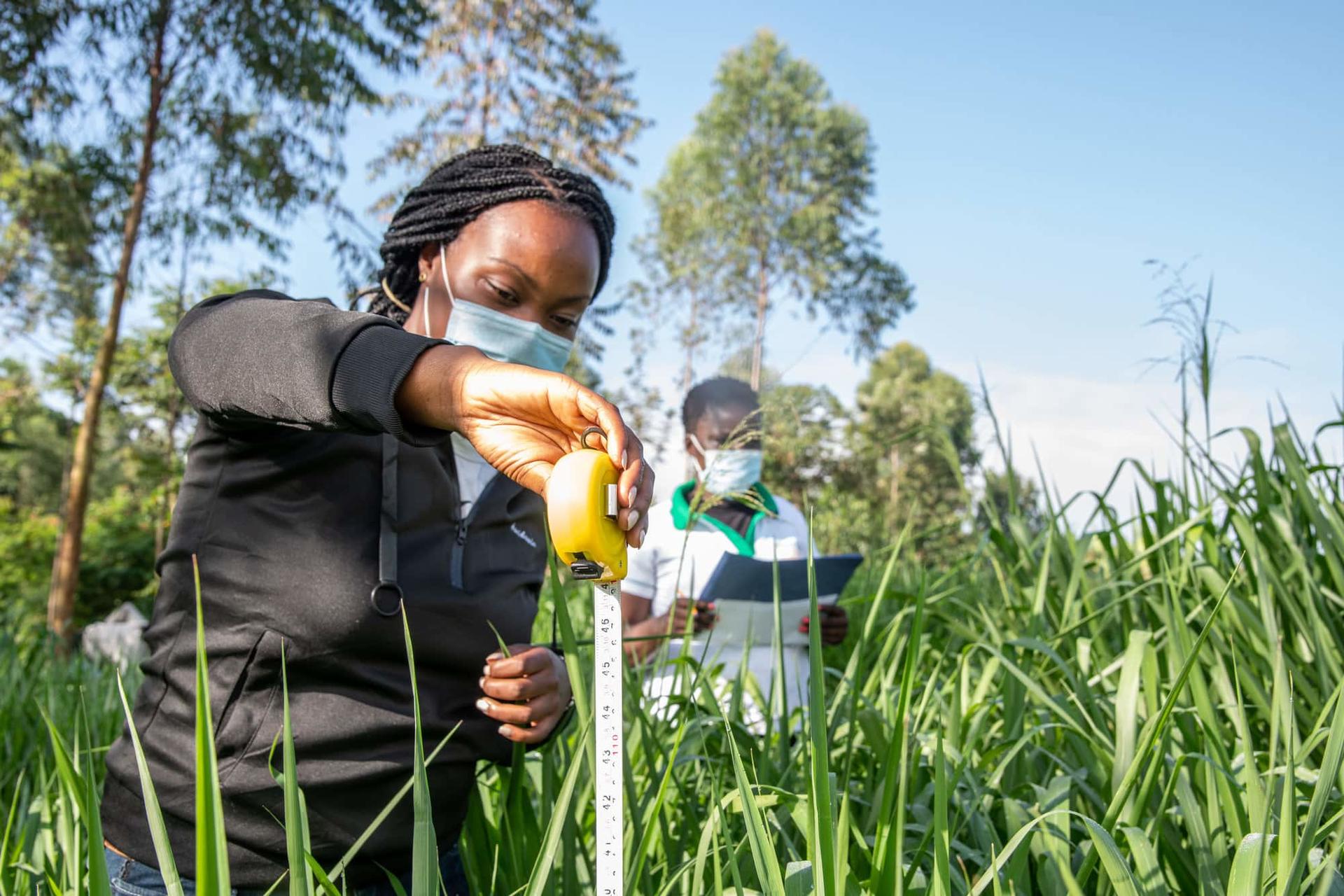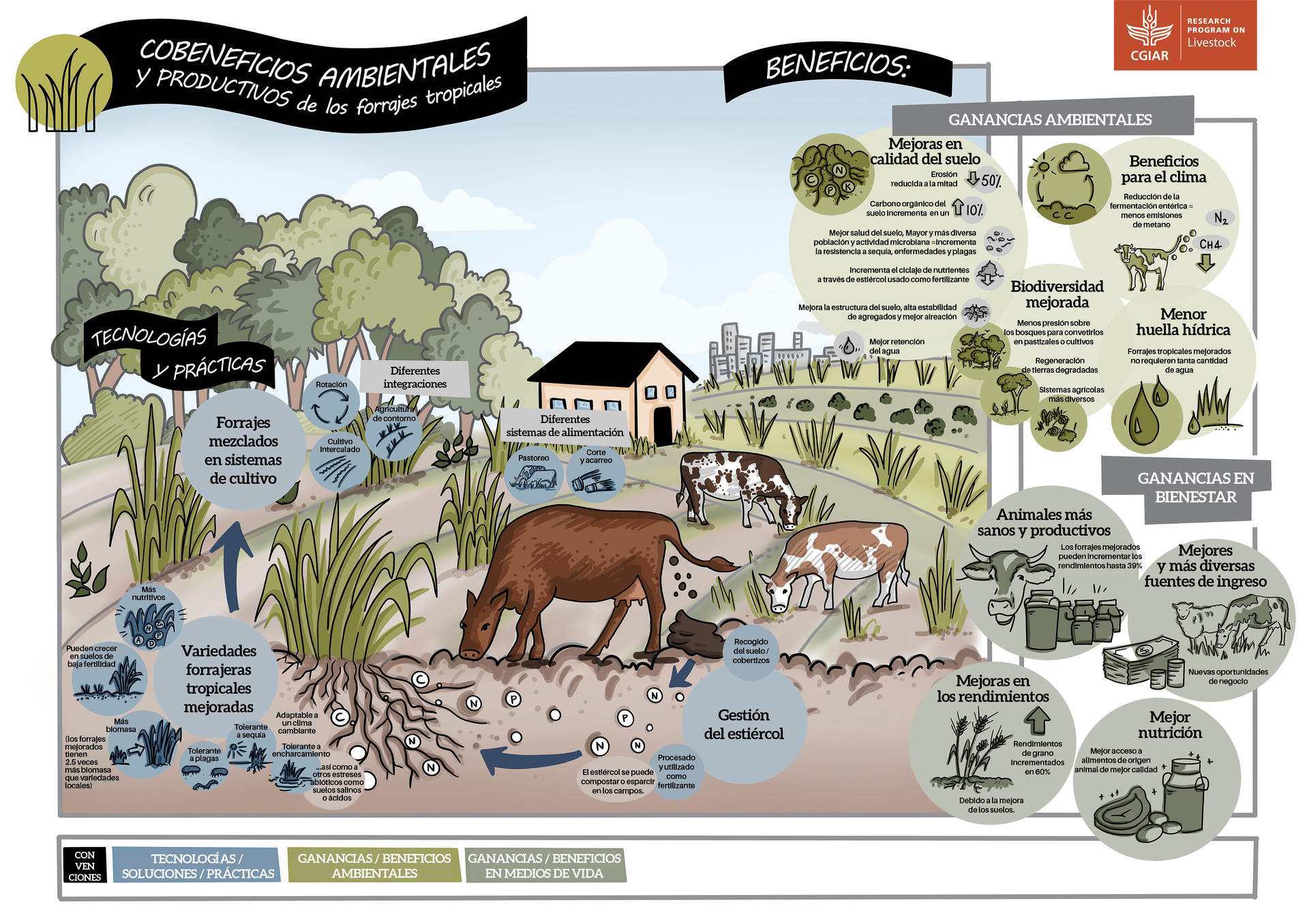Blog Improved forages in livestock diets offer solutions to reduce dairy sector emissions

June 1st was World Milk Day, a day conceived by the UN Food and Agriculture Organization (FAO) to ‘recognize the importance of milk as a global food, and to celebrate the dairy sector’. It’s not hard to see why: more than 6 billion people across the globe – majority of whom are found in developing countries – consume milk and milk products (FAO). Not only is milk a cornerstone of many cultures and diets, it has also been identified as a superfood with essential micronutrients that can help combat malnutrition in small children.
In many developing countries, however, demand for milk outstrips supply. Milk production is often constrained by low-quality livestock breeds, poor feeding practices, disease and in many areas, rising temperatures are aggravating already low productivity levels. Ineffective market systems that inhibit access are also a problem. Rapidly increasing populations mean that milk demand continues to climb, while pressure to respond to the various environmental and climate change impacts of the dairy sector is also on the rise.
Under its new portfolio of research programs launched this year, CGIAR has designed two initiatives that seek to address some of these challenges – Livestock, Climate and System resilience (LCSR) and Sustainable Animal Productivity for Livelihoods, Nutrition and Gender inclusion (SAPLING). Tried-and-tested technologies in the areas of animal genetics, herd health, and feeds and forages are being bundled into a pipeline of innovations for smallholder farmers that are both demand-driven and results-oriented. The goal is to revitalize livestock-based food systems in these emerging economies so that they can meet their national food, nutrition and livelihood security needs.
The forages component of these two initiatives is designed to enhance livestock productivity, while reducing its impact on emissions and the environment. Part of the efforts include introducing forage varieties and activities that can help diversify livestock diets from their over-dependence on natural pastures and crop residues.
Many forage varieties have been developed, tested and deployed at scale, while others are still undergoing trials. Those going to scale are Brachiaria hybrids (Mulato II, Cobra and Cayman) and cultivars (Basilisk, MG-4, Piata and Xaraes), which are regarded by farmers as “wonder grasses” because of their proven ability to boost milk production. A study conducted by the Alliance of Bioversity International and CIAT (Alliance) in western Kenya showed that feeding a dairy cow with Panicum Maasai results in 31% increase in daily milk production.

Researchers measure and weigh pastures in field trials to identify suitable forage varieties for livestock, in conjunction with the Kenya Agriculture and Livestock Research Organization (KALRO). Photo Alliance of Bioversity International and CIAT/Georgina Smith
Besides increased productivity, forages have multifaceted benefits on the environment. They are salient soil stabilizers, assist in water retention and microbial activity in the soil, and contribute to soil carbon sequestration. Various research outputs of the Alliance related to environmental co-benefits of forages show a reduced greenhouse gas emission intensity in producing a liter of milk as a result of improved feeding. This offers a tangible step in transforming the dairy sector to dairy net zero.
Dato científico: los animales que consumen menos energía producen menos desechos en forma de metano.

Livestock production systems that include improved forages can produce a multitude of benefits, both in productivity and in environmental and climate change impacts. (Source: CGIAR Livestock Research Program [CRP Livestock], 2021)
Due to the high levels of easily digestible fibers in the improved feeds, the digestion and absorption processes take a shorter time leaving a small room for methane emissions.
A dairy net-zero starts at production and provides numerous benefits along the value chain. Small improvements such as providing appropriate feed to livestock can contribute overtime to big changes. Wide acceptance and adoption of improved technologies is key in the dairy sector transformation process, so that we can celebrate world milk day every day.
Acknowledgements
This article was originally published in English here: Improved forages in livestocks diets offer solutions to reduce diary sector emissions
